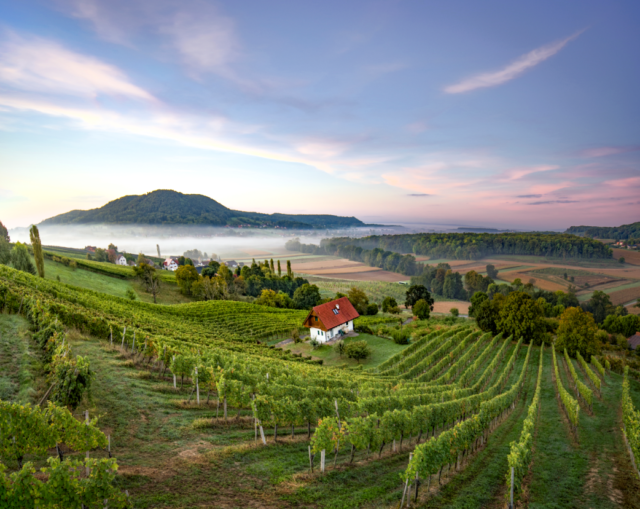This website uses cookies so that we can provide you with the best user experience possible. Cookie information is stored in your browser and performs functions such as recognising you when you return to our website and helping our team to understand which sections of the website you find most interesting and useful.
Austria reflects on ‘challenging yet rewarding’ 2020 vintage
The Austrian Wine Marketing Board (AWMB) has published a report on the 2020 vintage, which saw changeable weather conditions cause challenges but patience pay off.
 While conditions varied throughout Austria’s wine regions, the AWMB said that 2020 was characterised by a succession of opposite weather patterns.
While conditions varied throughout Austria’s wine regions, the AWMB said that 2020 was characterised by a succession of opposite weather patterns.
The first part of the growing season until May was warm and dry with “insignificant” frost episodes. What followed was a period of wet and fluctuating weather patterns with heavy rainfall in May and parts of June. Despite this pattern, flowering occurred at the usual time across the board.
AWMB said the country experienced a “good old-fashioned summer”, with alternating periods of dry, sunny weather and rain. This, the organisation said, led to “strong plant growth and high disease pressure” making good vineyard management essential.
While vines were in “good shape” by August, areas, for example parts of Wachau, Kremstal and Traisental and towns in Burgenland and Steiermark suffered “serious damage” in localised hailstorms.
While September had a large number of sunshine hours, many areas in the country experienced high levels of rainfall towards the end of the month. This meant that even those areas that weren’t affected by hail had to conduct a “meticulous” selection at harvest.
Harvest itself began in early September and continued until late October.
One of the regions that experienced the best conditions was Burgenland. The region, in the east of Austria, experienced “little or no effect from autumn rainfall”, particularly the wine villages around Lake Neusiedl. With early grape ripening the harvest was completed by the second half of September before the weather changed.
Expectation is high for both the region’s white and red wines, with whites from the Leithaberg DAC and reds made from Zweigelt and Blaufränkisch showing particular promise. While too early to assess their true quality, dessert wines from Ruster Ausbruch DAC and Neusiedlersee DAC have been produced, albeit in small quantities. There was even some production of Eiswein.
Niederösterreich, or lower Austria, and Wien (Vienna) produced “very fresh and fruity wines” with a slightly lower alcohol content and more acidity than in recent years. The reds are also somewhat lighter in body.
The wines produced in Steiermark, or Styria, are expected to show strong “regional typicity” this year, particularly the lighter white gebietsweine. The region’s flagship Sauvignon Blanc is proving “especially attractive and characteristic”, while varieties from the Pinot family and Rieslings from Sausal also performed well. Overall, the AWMB predicts that the whites from the region will achieve similar qualities to those produced in 2013 and 2016.
A surprise this year was Bergland, where vine growers reported “all-round satisfaction”. Growers in Oberösterreich (Upper Austria) have reported an “extremely successful” vintage untroubled by the weather. Similarly positive reports are also coming from from Kärnten (Carinthia).
In the far-west Tyrolean and Vorarlberg vineyards, growers did have to carry out careful vineyard management to prevent downy mildew and powdery mildew, as well as rot. The usual autumn Alpine föhn winds did not materialise. A harvest in mid to late October resulted in grapes of “above average quality”.
To read the full Austria Wine report, please click here.
Read more:

